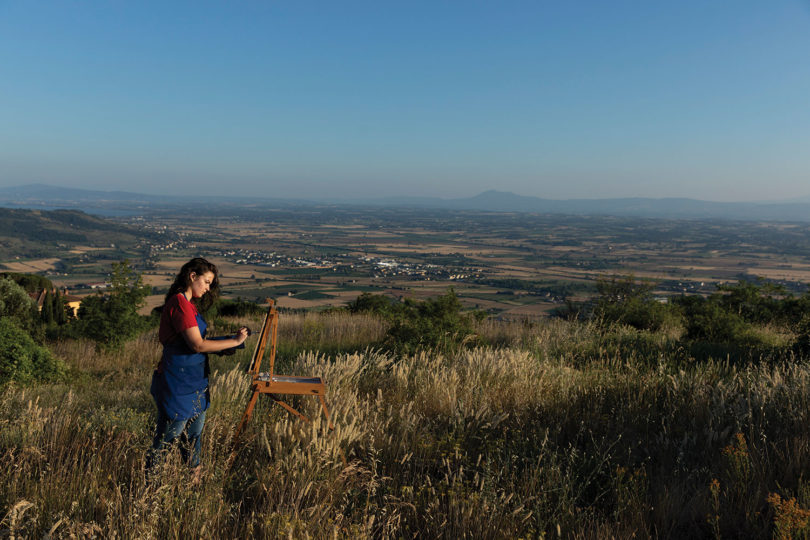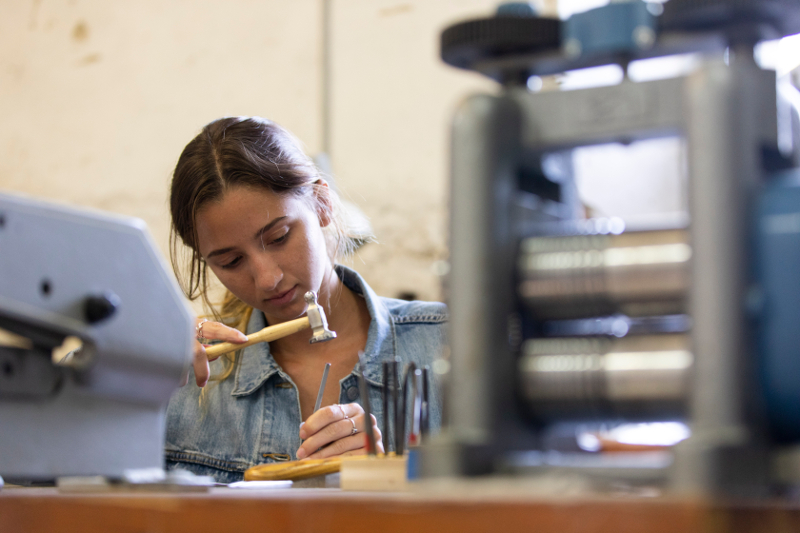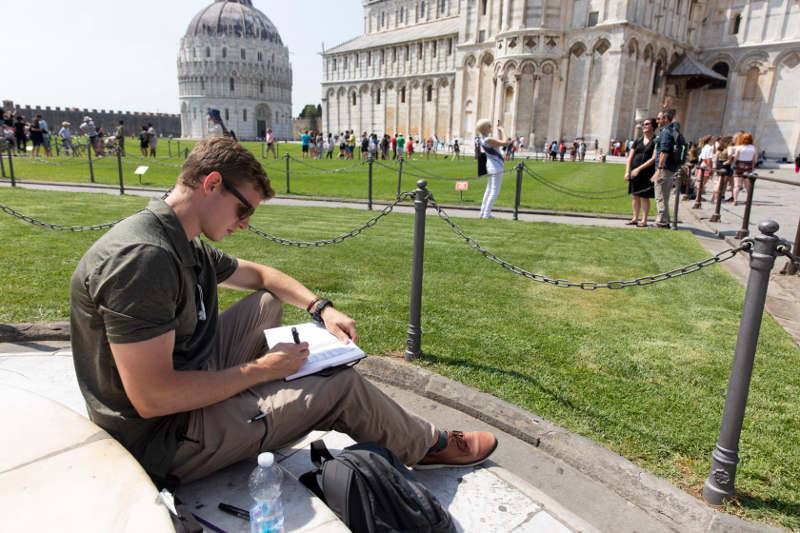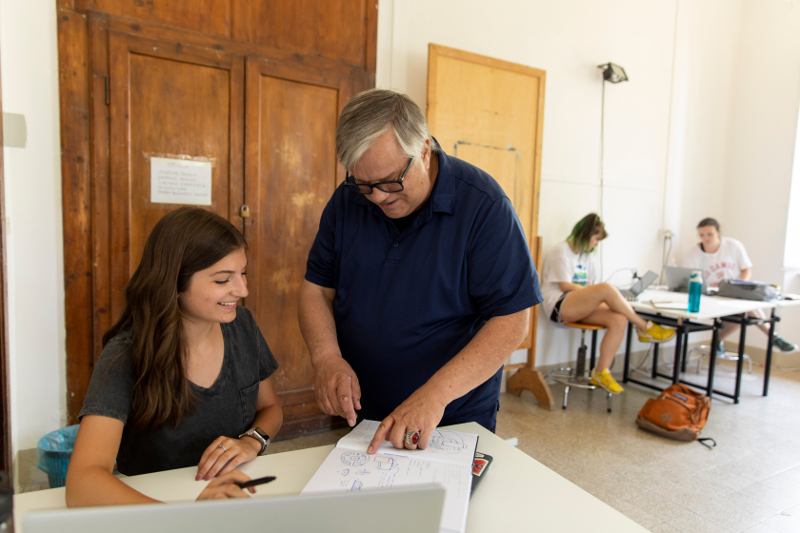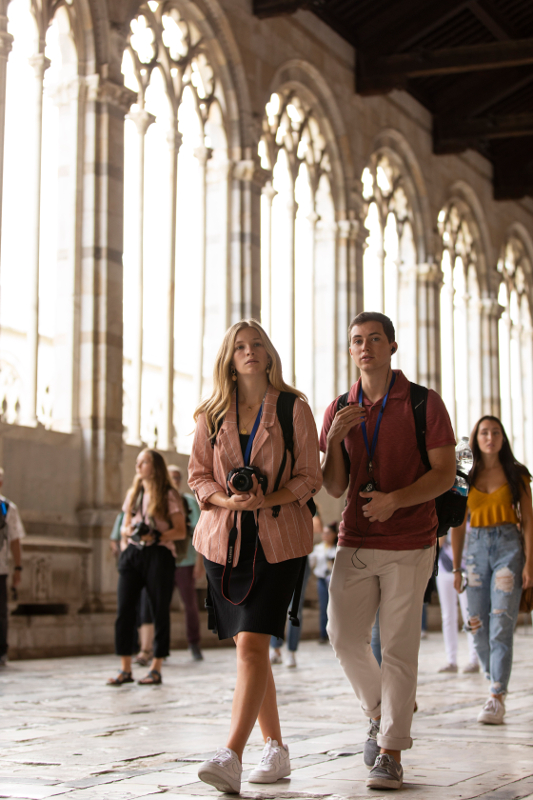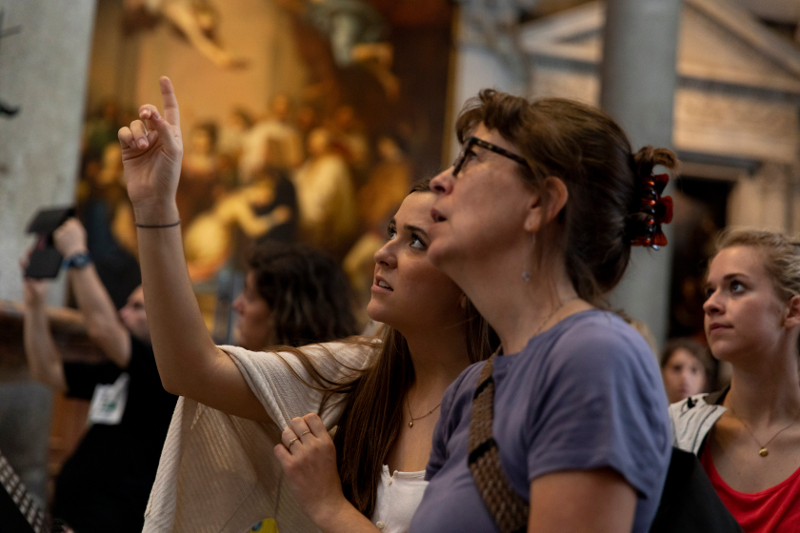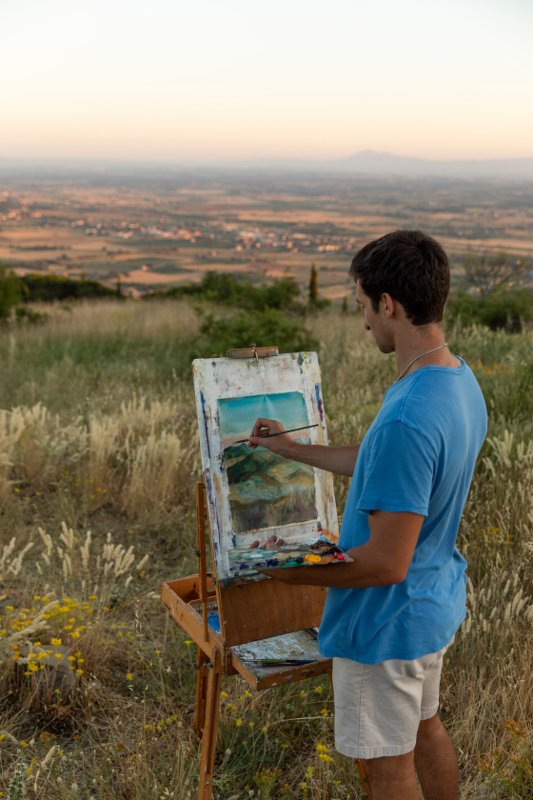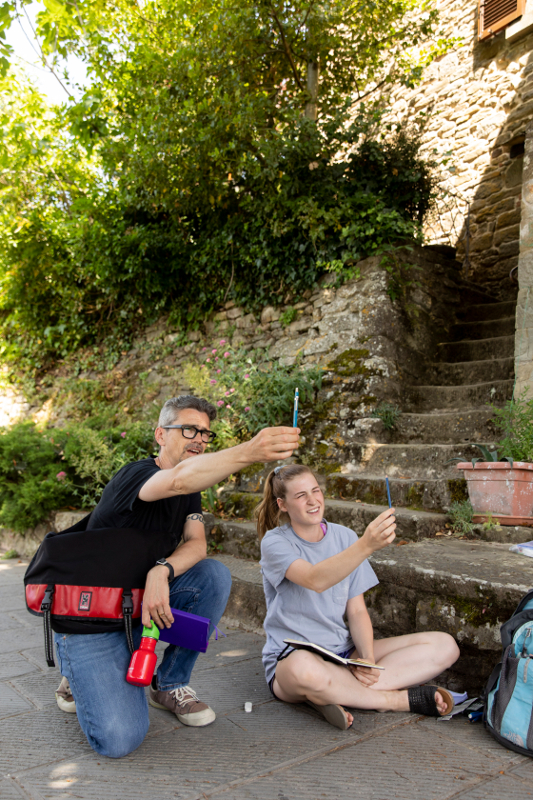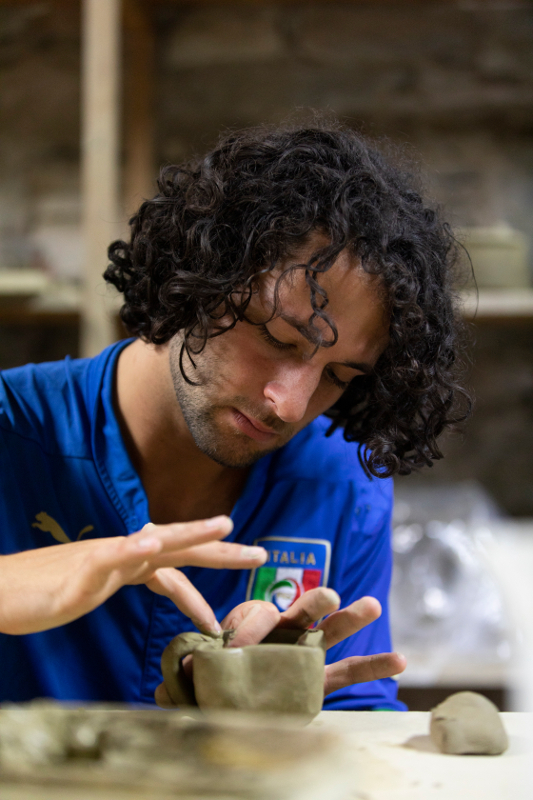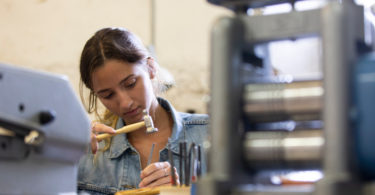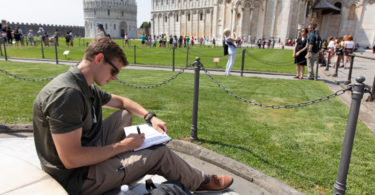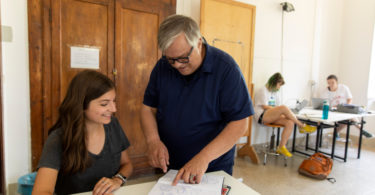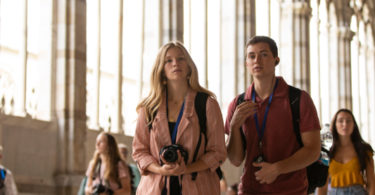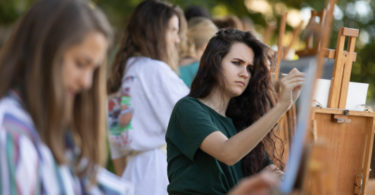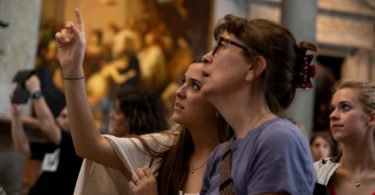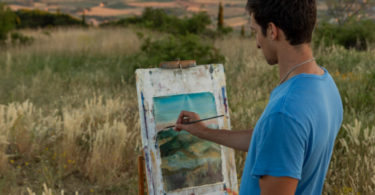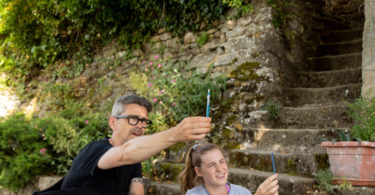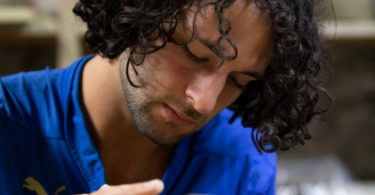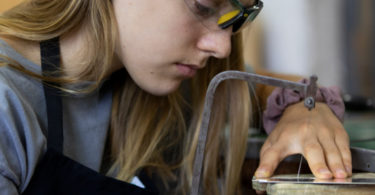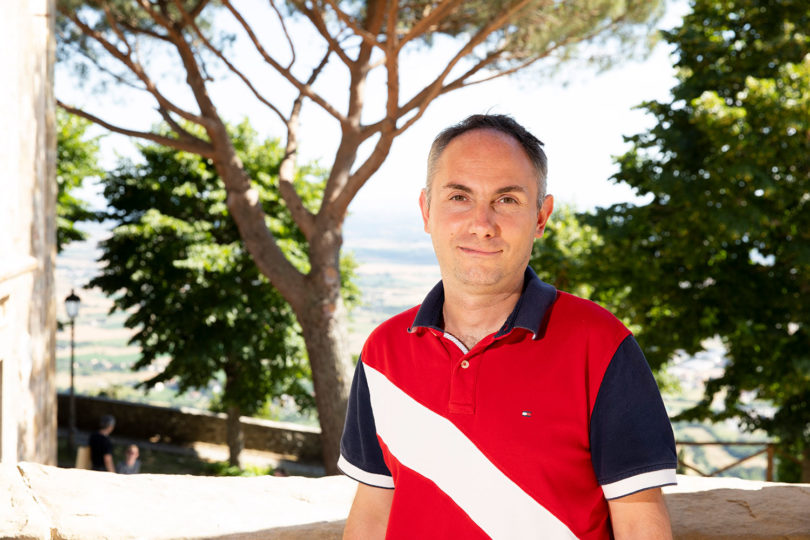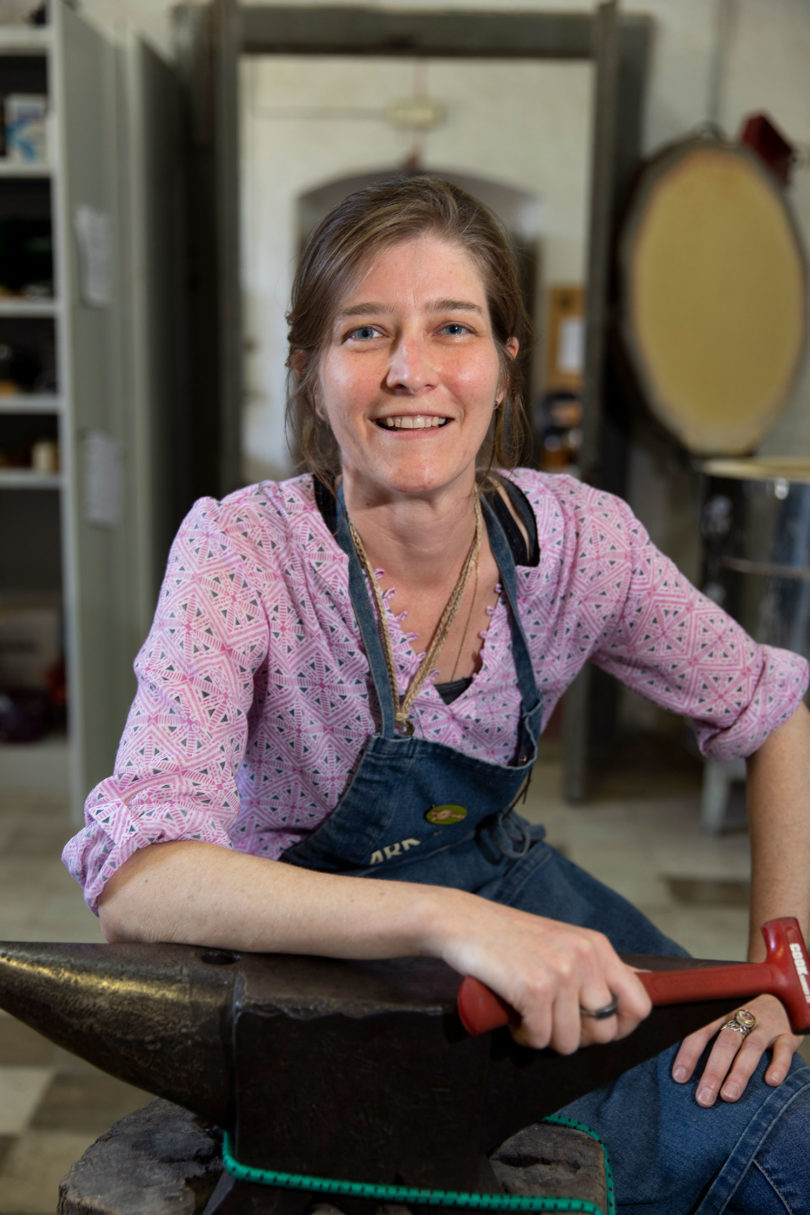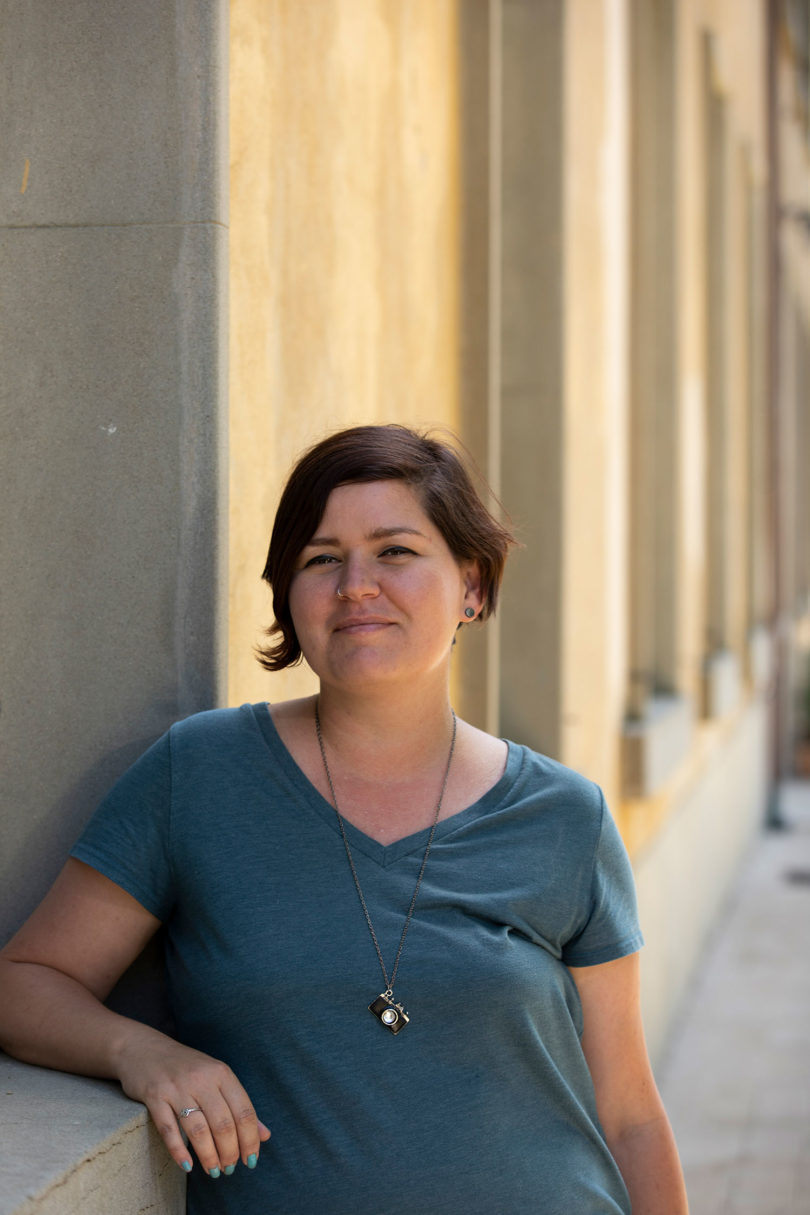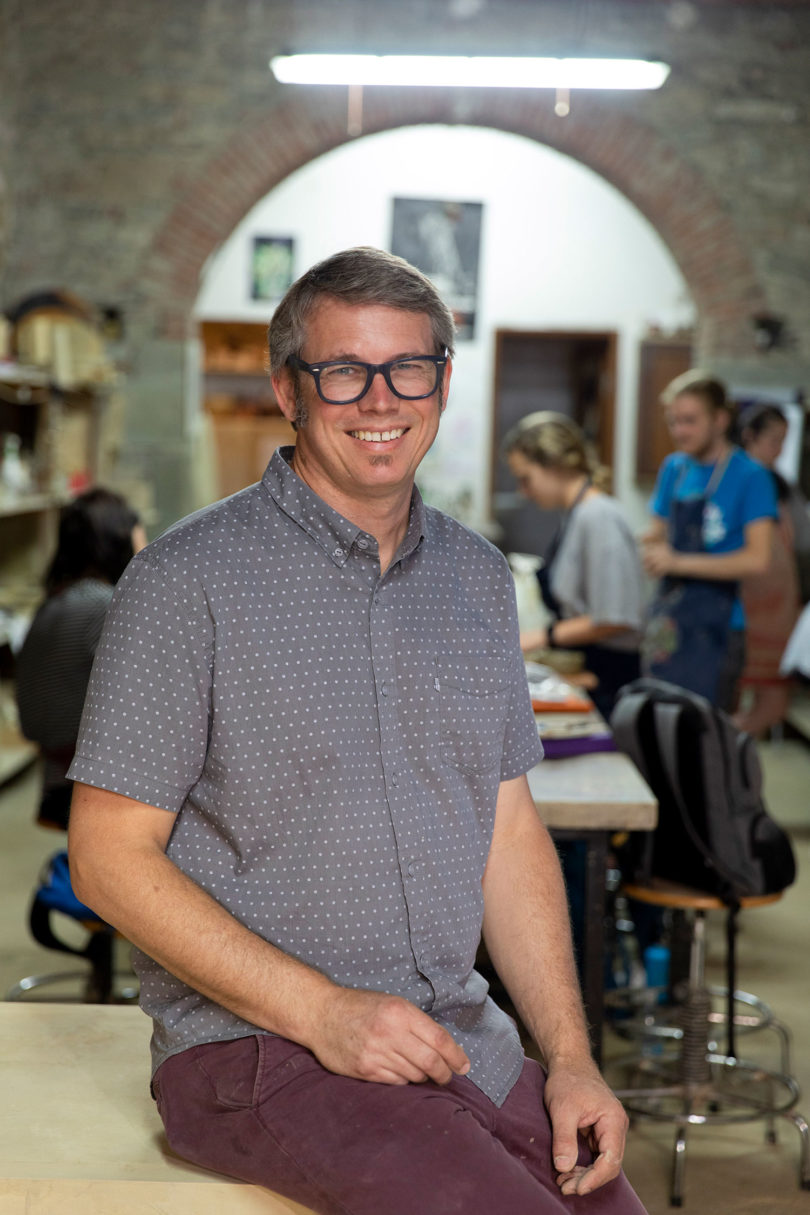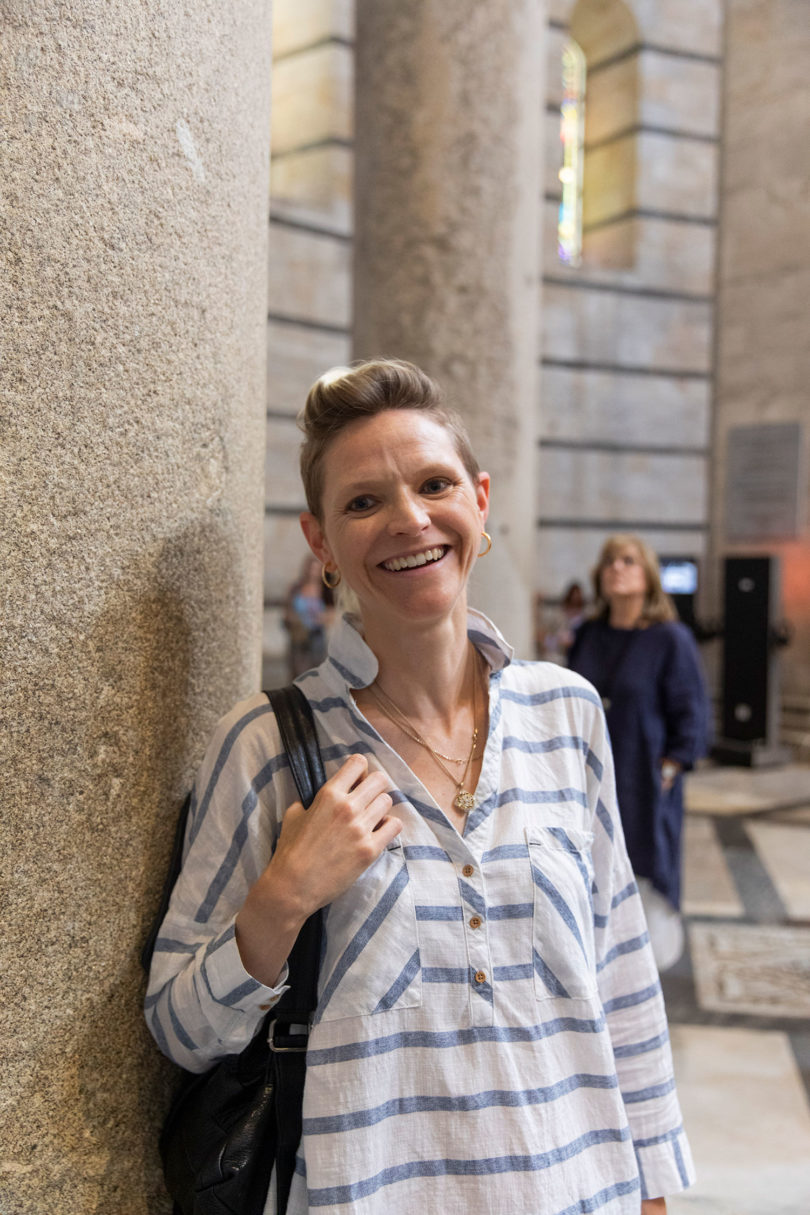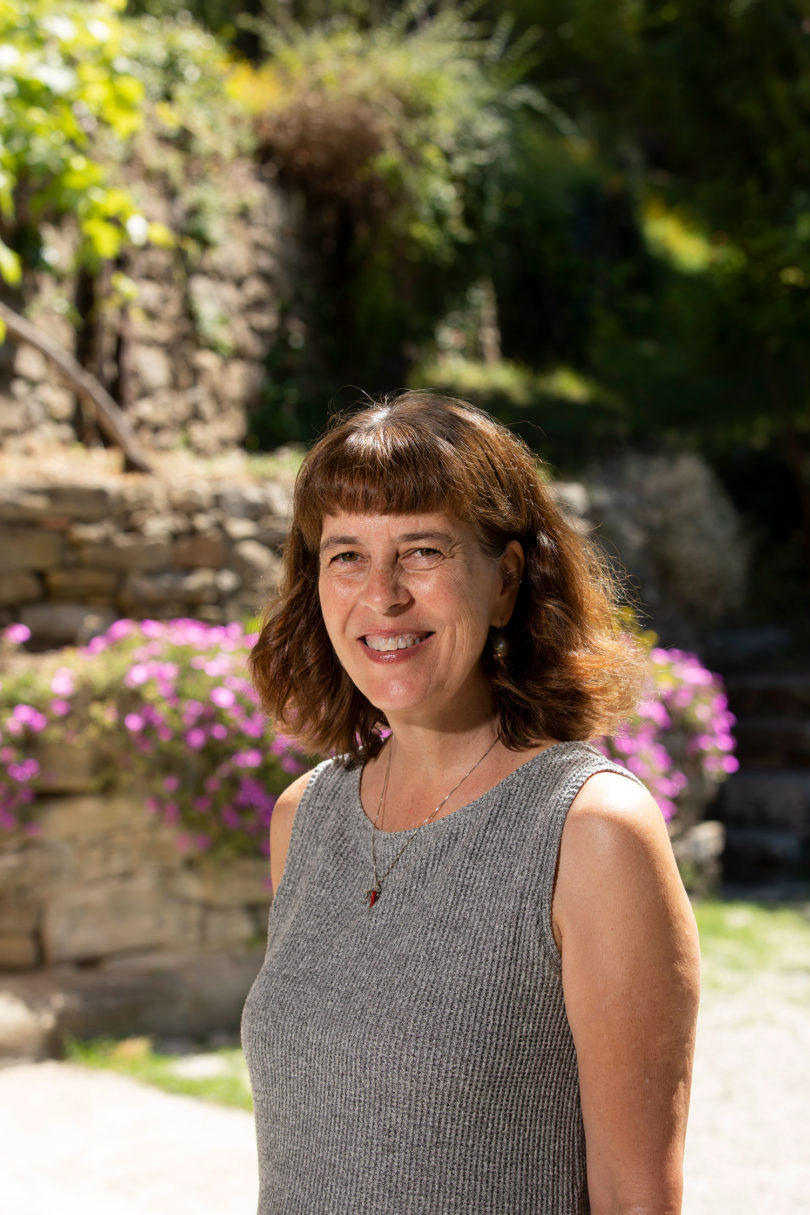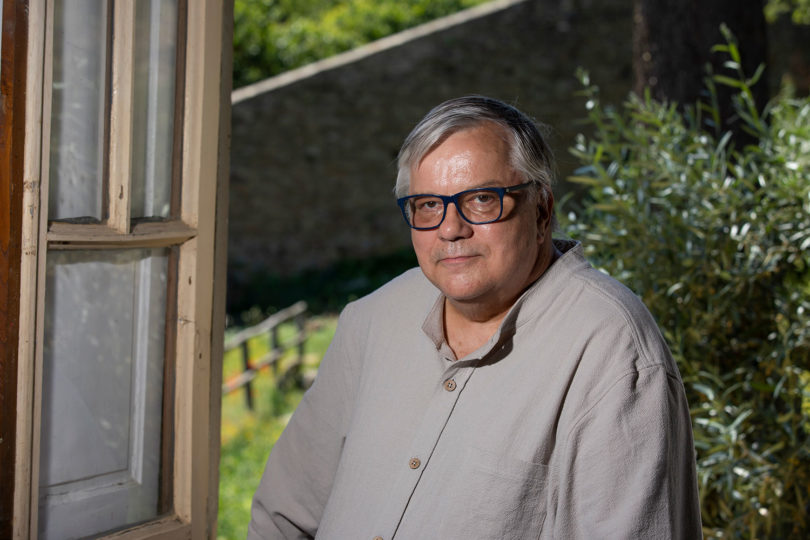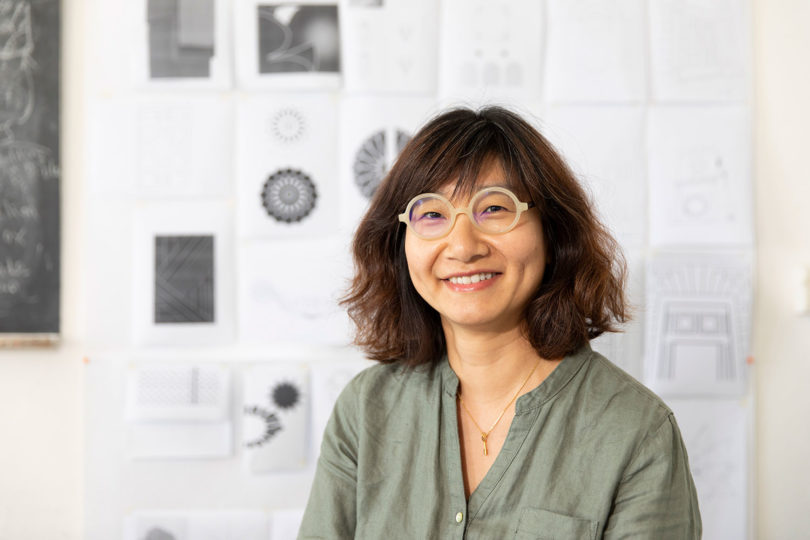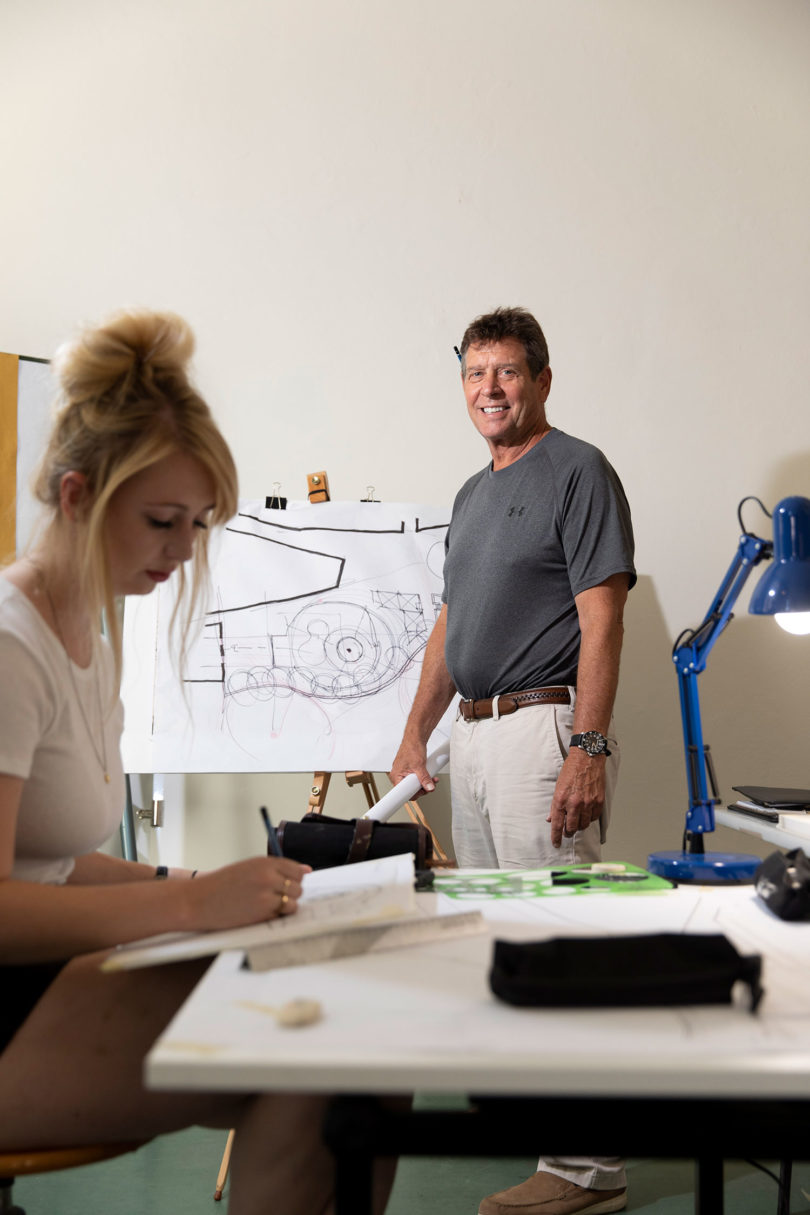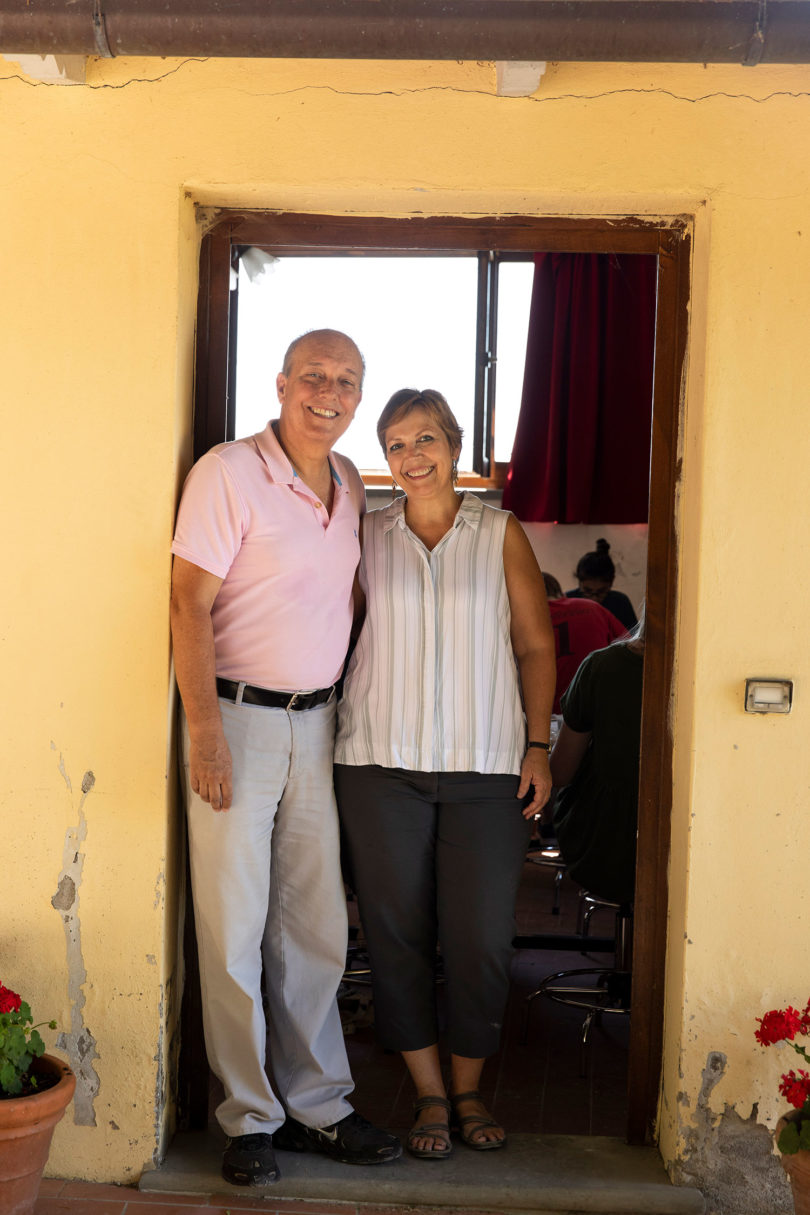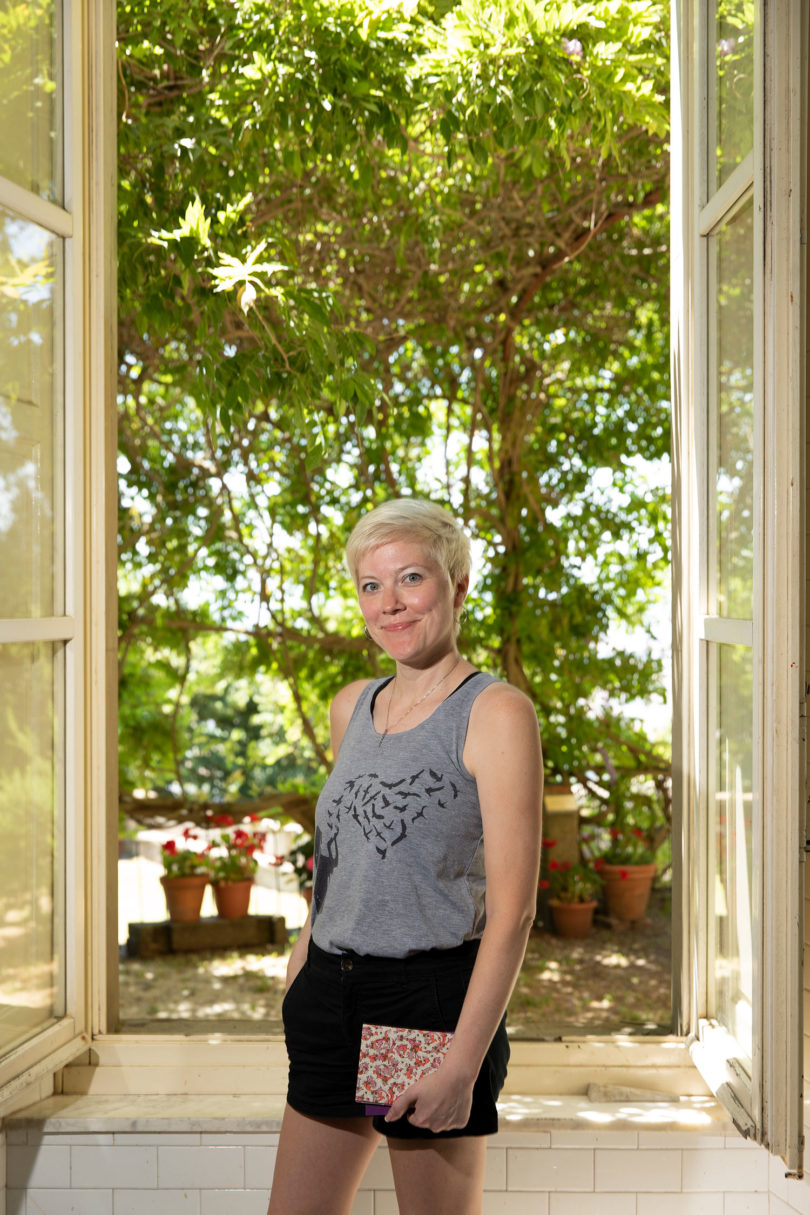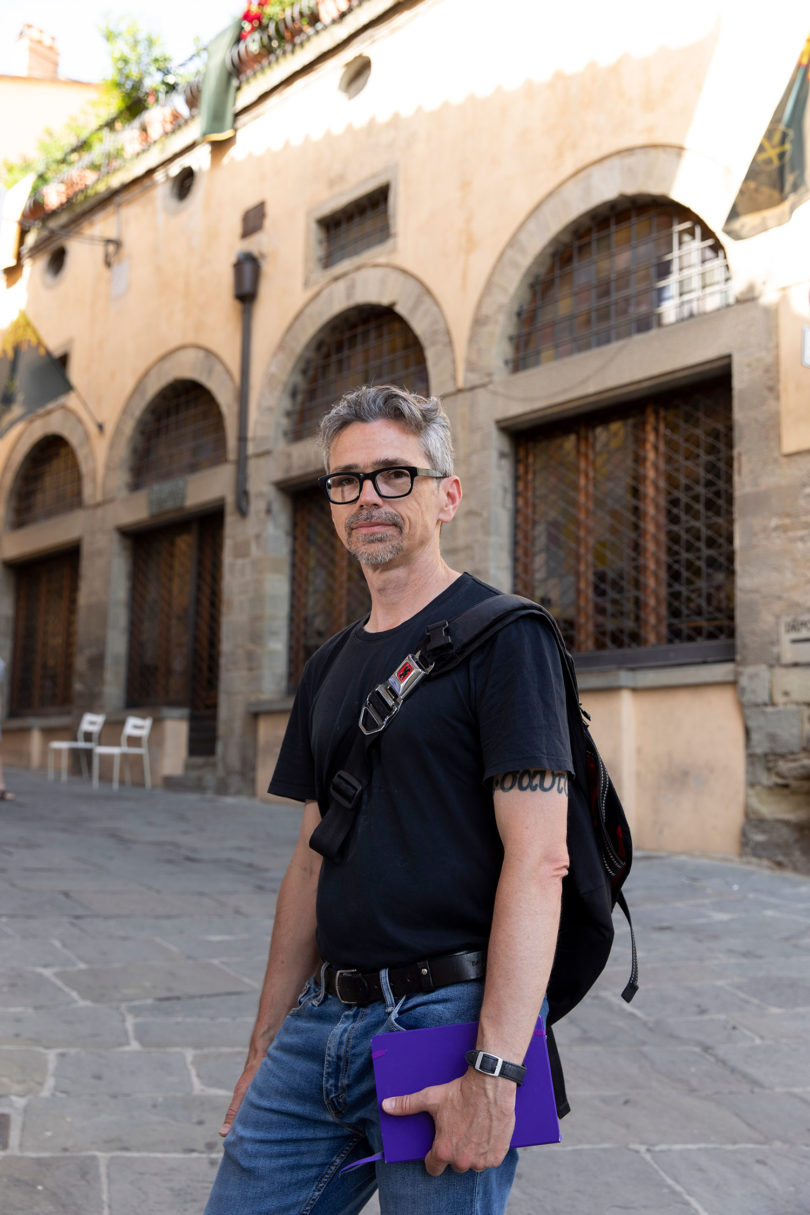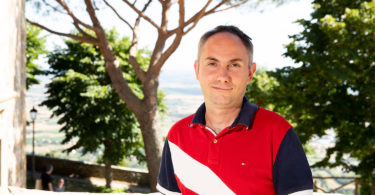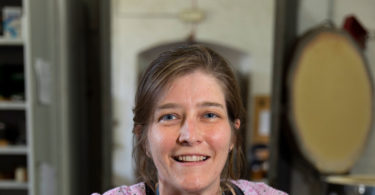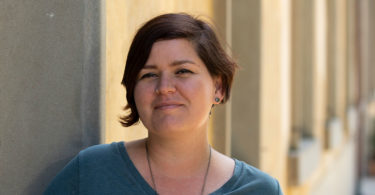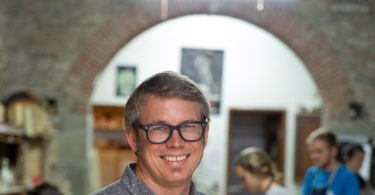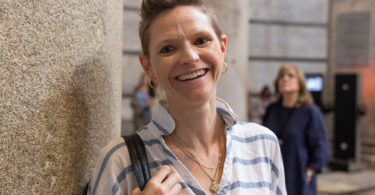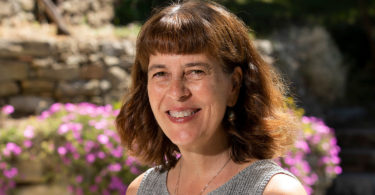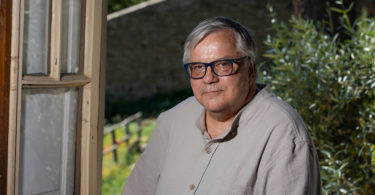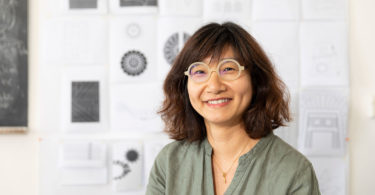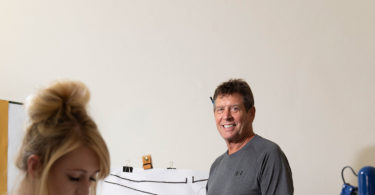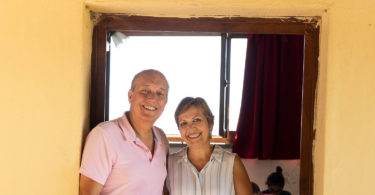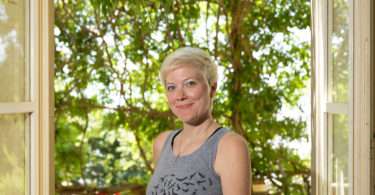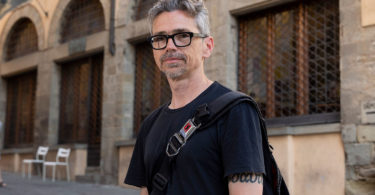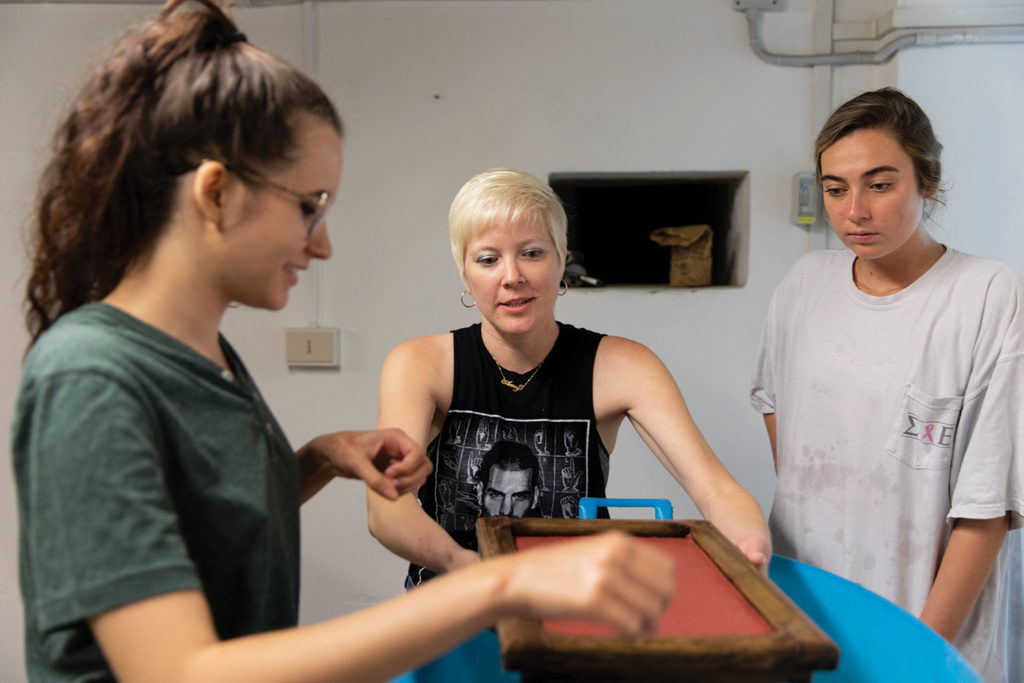Even by the high scenic standards of Tuscany, the views from Cortona, Italy, are stunning. One of the loveliest is looking south from near the top of Monte Sant-Egidio, where the town has sat for more than 2,000 years. The tapestry of rolling fields in the foreground is occasionally interrupted by silvery leaved stands of olive trees whose bounty is still harvested by hand. The blue waters of Lago Trasimeno lie just beyond and just past that are the hills that give the horizon its depth.
“There is something beautiful around every corner in Cortona,” says Margaret Morrison, associate professor of art in the Lamar Dodd School of Art. She has spent this summer teaching painting at UGA Cortona, the university’s oldest and largest study abroad program.
“We go outside and I’ll say to the students, ‘Just look across this valley!’ You won’t see this view anywhere else,” she says.
UGA Cortona’s painting studio dates to the 1640s; it was renovated just over a decade ago. Among its many previous lives, the studio was a Catholic chapel, now deconsecrated. What was once the living space for the cloistered nuns lies just beyond the far wall, and Morrison’s personal workspace is in the loft where the Mother Superior could look down on the nuns in prayer. The symbolism isn’t lost on her.
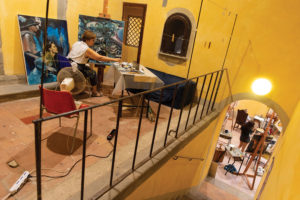
Painting professor Margaret Morrison is always nearby if students need her. (Photo by Andrew Davis Tucker/UGA)
“I feel more like a mentor,” Morrison says. “We have dinner with the students every night. We walk up the hill together. It’s more like an Old World master/apprentice relationship.” That gives a lot of freedom to the advanced students, who upon entering class grab their easels and carry them to a spot in town that moves them. The beginners, many of whom are painting for the first time, spread out in chapel. The high quality of their still-lifes and portraits belies their inexperience.
“This is the most inspiring studio I’ve ever taught in,” Morrison says. She is speaking specifically about the chapel, but her feelings really apply to all of Cortona.
City on a Hill
UGA’s study abroad destination wasn’t stumbled upon by accident, and it certainly wasn’t chosen for convenience. In 1969, the founder and namesake of UGA’s School of Art, Lamar Dodd, asked faculty member Jack Kehoe to pick a place in Italy to start an art program. Kehoe, who had previously worked as a sculptor in Rome, knew the country, and he knew what he was looking for in a study abroad location.
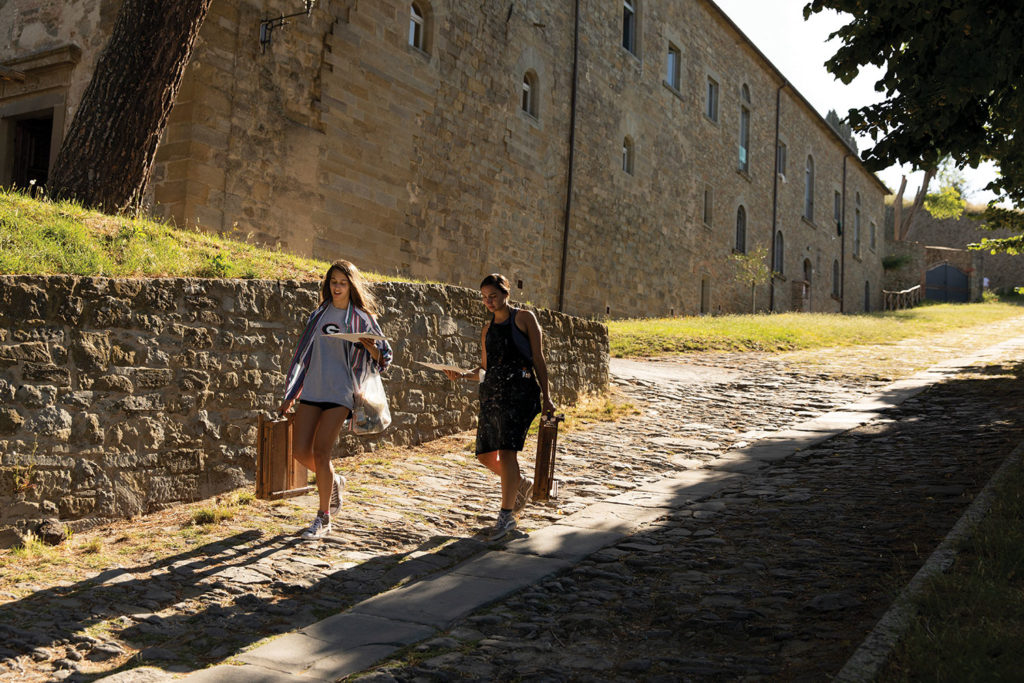
Easels in hand, painting majors Madelaine Kinnebrew and Carolyn Bresnahan hike down the hill from the Kehoe Center to the center of Cortona. (Photo by Andrew Davis Tucker/UGA)
For three months Kehoe crisscrossed Italy, visiting 34 cities and towns around the country. When he reached the 35th, on the top of a hill in Tuscany, he knew he’d found something special.
History surrounds Cortona. Literally. The wall that encircles it was first built by the Etruscans in the seventh century B.C., and for the next 1,500 years whoever controlled the area—the Romans, the Goths—added onto it. They built things to last back in those days; the wall has stood the test of time and is visible from miles away in the valley.
Inside those walls, Cortona’s patchwork architecture includes Etruscan influence, although many buildings date from the Middle Ages to the Renaissance or sometime after. A prime example is the Palazzo Communale and its clock tower, which dominates Cortona’s largest space, the Piazza della Repubblica, as well as many tourist photographs. A maze of narrow streets and alleys marked by steep hills stitches it all together.
At the time of Kehoe’s visit, most U.S. study abroad programs, not just in Italy, but around the world, were headquartered in major urban centers. Kehoe wanted something different. He wanted a place that was relatively undiscovered, as students tended to get lost in cities overrun by tourists. Classroom and arts facilities were a must, as was lodging. A friendly local government open to partnership with the university was essential.
Fortunately for everyone involved, Cortona’s new mayor, Tito Barbini, was looking to make a big impact, and building a relationship with Kehoe was a perfect way to do that. The following summer, UGA Cortona came into being.
Cortona’s first classes were taught in what is now Teatro Signorelli, a beautiful performance space in the center of town. Students lived a few paces away in what had been a monastery. But in reality, the classroom was all of Cortona.
It’s the same way today.
“I wanted to study in a place that felt like home, and you can’t do that in a large city,” says Emily Rogers, a second-year landscape architecture major from Augusta. “It’s great to be in a smaller place. You feel connected to it in a way you couldn’t in a larger place. You can see how people walk and listen to how they talk. I wanted to dive in and look at the small details.”
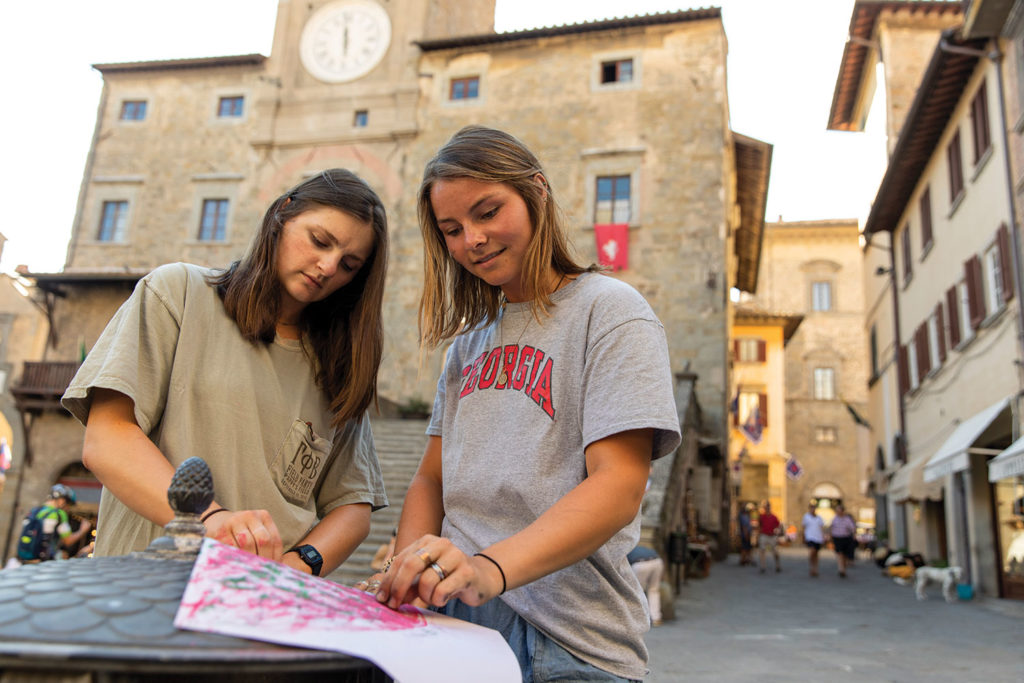
Landscape architecture majors Caroline Petithomme and Emily Rogers texture rubbing in the Plaza della Repubblica. (Photo by Andrew Davis Tucker/UGA)
Eventually, the classes were moved to two buildings at the end of Villa Margherita, a short (one-quarter mile), remarkably steep (33 percent grade) avenue that runs along the south wall of the city. The first, the Severini School, is named for modernist painter and Cortona native Gino Severini, and it now includes space for printmaking, book arts, drawing, interior and graphic design, landscape architecture and photography.
The second, just further up the hill, was purchased by UGA in 2002. The bottom floors had housed ceramics, the metal shop, and other facilities for years, but at the time of the purchase, the upper levels were an assisted living facility for elderly Cortonese. The construction of a new hospital in neighboring Camucia meant the residents had a new place to live and the University of Georgia had a new opportunity. After an extensive renovation, the building opened in 2005, and the University named it the John D. Kehoe Cortona Center.
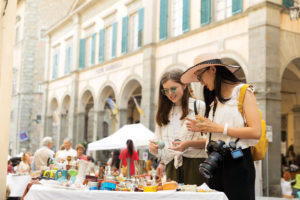
Sarah Northrop and Xiao Tan shop for hidden treasures at Cortona’s monthly antiques market. “Photo by Andrew Davis Tucker/UGA)
The center now includes housing for nearly 100 students with many of the amenities you might expect (the wi-fi is pretty good and the kitchen serves a mean breakfast), while making allowances for the historic nature of the place. (The Kehoe Center, like most of Cortona, does not have air conditioning. Still, the rooms are comfortable most hours, even in the middle of summer. Renaissance construction was advanced in more ways than one.)
Kehoe, who died in 2016 at the age of 89, led the program for 20 years and his presence looms large. The main academic building is named for him, there is a bust of him on the terraces behind it and his portrait graces the building’s main hallway.
Art is the definitely the focus of summer programs. Spring and fall semesters include not just art but also theatre, fashion merchandising and women’s studies. The month-long Maymester is even more wide-ranging and features courses taught only in Cortona, such as science and art history, business and culture, and viticulture and enology.
Looking at the World in a Different Way
It’s a theme that arises frequently in Cortona. Every scene, every overlook, every turn around every street is more mesmerizing than the one before.
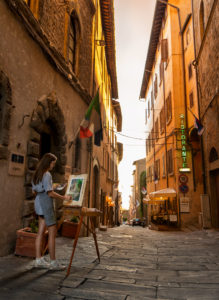
Sarah Lee painted two versions of this Cortona scene–one at midday and one at twilight to take advantage of the dramatic light changes. (Photo by Andrew Davis Tucker/UGA)
“I think I came to Cortona with the intention of being inspired by what I’m seeing. At home, I don’t really think like that,” says Sarah Lee, a third-year painting major from Valdosta. “That’s definitely something I want to take back with me: to let myself be more aware, even just walking to class in Athens, every day of things around me that I could use for artwork.”
Studying in Cortona requires a watchful eye, a rigorous imagination, and an inquisitive heart.
“There is a lot of pre-selection before anyone even comes out here,” says drawing professor Mark Taggart, a 12-month resident of Cortona. “The average student is not the average student.”
All students are required to take three classes, so they spend six hours every day working on their craft. Studios are open until midnight, and they are almost always occupied.
“I know that most of my students won’t be studio artists, but they will be art collectors,” says Morrison. “They will be patrons; they will go to museums. When we go to Florence, they are the ones who lean in too close and set off the alarms.”
If the students are go-getters, faculty members are at least as ambitious. They incorporate Cortona—and Italy in general—into their coursework in all sorts of creative ways. Graphic design professor Moon Jung Jang’s students design Cortona flags for the town, which are submitted to the mayor’s office upon completion. The students in Marty Fielding’s ceramics class use clays and glazes that are specific to Tuscany.
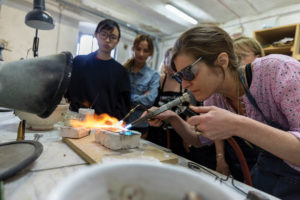
Jewelry and metals professor Autumn Brown BFA’ 06 fires up her latest creation. (Photo by Andrew Davis Tucker/UGA)
Printmaking professor Melissa Harshman is going for something a little more continental—she asks her class to design personalized Euro notes, an intricate assignment that often includes student self-portraits etched in mirror image. Jewelry and metalworks professor Autumn Brown BFA ’06 encourages her students to seek out interesting designs on stone or tapestry and use them in their jewelry. Thom Houser’s interior design students are tasked with creating a display space for an Italian company they choose. The classwork includes a visit to a brick and mortar store of that particular product. And Richard Morrison, who co-teaches Chemistry in the Arts with his wife, Margaret, shows students how to create and apply the egg tempera paints using the same ingredients Michelangelo did when he painted the Sistine Chapel in the Vatican.
Photography professor Bridget Conn MFA ’03 had her students document their trip to Rome though photos using long and multiple exposure techniques. The assignment resulted in dreamy, psychedelic works of art.
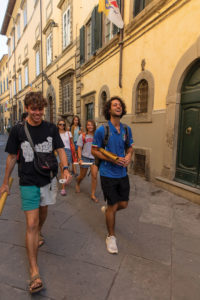
Clint Granros and Jairus Romano stroll down Via Nazionale, Cortona’s main boulevard. (Photo by Andrew Davis Tucker/UGA)
The faculty are skilled at improvisation, too. For instance, during a trip down the hill to central Cortona, landscape architecture professor Brian LaHaie detoured into an art gallery where students met the painter whose work was on display. LaHaie had met her at a café a few days before and asked if she’d be interested in speaking to his class. He finished up the trip with an impromptu lecture in a park where he pointed out first-hand the differences between European and American landscaping traditions.
“The landscape is your constant companion,” says Caroline Petithomme, a third-year landscape architecture major from San Luis Obispo, California. It’s very reassuring, and it’s a bonus that it’s flat-out beautiful and really unlike anything you’d see in the United States.”
This summer, Cortona hosted nearly 100 students who are taking classes in art and landscape architecture. An additional 30 students in the Terry College of Business, stay down the hill in town.
Teaching in Cortona
For faculty, the application process to teach in Cortona often begins at least a year before classes start. Many of summer’s faculty members have taught in Cortona before, but each of the rookies has a built-in affection for the Tuscan town.
Brown, Conn, and book arts professor Amy Pirkle all attended Cortona as students, and they returned to teach there for the first time this year.
“I recently found some notes I wrote in graduate school that included a list called ‘Five Indicators of Success.’ One of them was ‘Teaching in Cortona.’” says Brown, who is now teaching in the same metal shop where she once practiced, albeit with some updated equipment.
Italian language professor Gilles Antonielli has even closer ties to Cortona. He grew up there. After graduating from the University of Siena, Antonielli taught first in France, then came to the United States, where he taught French and Italian at UGA for more than a decade. When he moved back home, it made perfect sense to teach at UGA Cortona.
Teaching in Italy is not without its advantages, but Cortona is no vacation. The majority of faculty teach two two-hour classes, five days a week, but the job extends far beyond the classroom. While faculty do not live in the Kehoe Building with students—they have apartments scattered around Cortona—they see students all the time on campus, in the studio, and across town. Over the eight-week summer semester faculty become far more than just teachers. At one time or another, Cortona faculty are tour guides, hall monitors, cheerleaders, sounding boards, problem solvers, and counselors. They are on all the time.
And somewhere they need to find time work to on their own art, which they present alongside the best student work at La Mostra, the final Cortona-wide exhibition that wraps up the semester. In January, La Mostra comes to the Lamar Dodd College of Art on campus, so Bulldogs stateside can enjoy it.
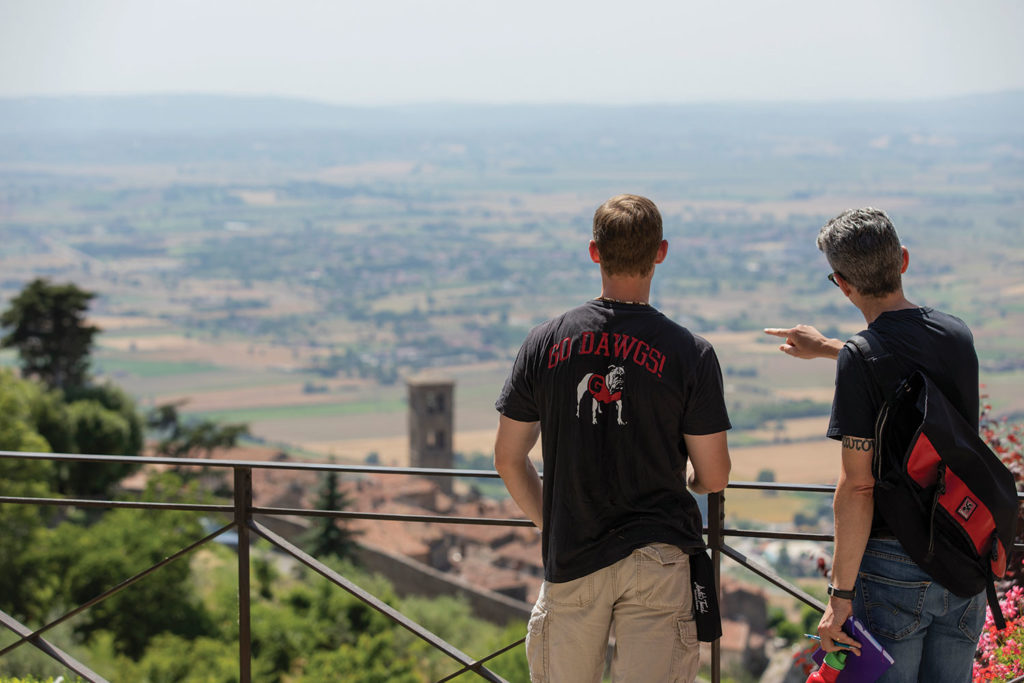
Drawing professor Mark Taggart gives James Davidson some pointers about how to sketch the scenery. (Photo by Andrew Davis Tucker/UGA)
Managing Things
Nowhere in Associate Director Kristine Schramer’s job description does it read “landscaping.” Yet there she is, along with a few willing students, pulling weeds and ivy outside the Severini Center on point for the UGA Cortona Campus Beautification Society, which she started a few years ago after the campus handyman died.
“The thing is, I’m not a gardener and I don’t really like yard work,” says Schramer, who is a painter and teacher by trade. “But I’ve done it for so long and learned so much about landscaping that it’s nice to get away from the paperwork and go outside for a couple hours.”
Schramer’s outdoor activities are just one example of how the interdependent staff members at UGA Cortona make it through a year on the hill.
Schramer moved to Cortona six years ago and lives there year-round with her husband, drawing professor Mark Taggart. Art history professor Jennifer Griffiths also lives in Cortona full time. She and Schramer take the lead in planning and executing the Saturday excursions students and faculty take to cities like Florence, Rome, Siena, Bologna, and Pisa. Enza Valente, whose office is just off the Piazza della Repubblica, is the liaison with Cortona’s city officials and businesses.
Zoey Wilson and Bryan Parnham are both Cortona graduates who work for the program as assistants. That assistance ranges from pouring concrete and fixing sinks to helping students adjust to life an ocean away from home.
Along with Director Christopher Robinson MFA ’01, Valente, and Schramer are the key players in the keeping the relationship between UGA Cortona and the town of Cortona moving forward.
“Authentic experiences can be hard for students to find,” Schramer says. “One of the things I try to do is come up with ways the students can integrate into the town.” It may be hard, but there has been a lot of success. For instance, students host a radio show on one of the local stations, and they hold an auction for student-made art with the proceeds given to local charities.
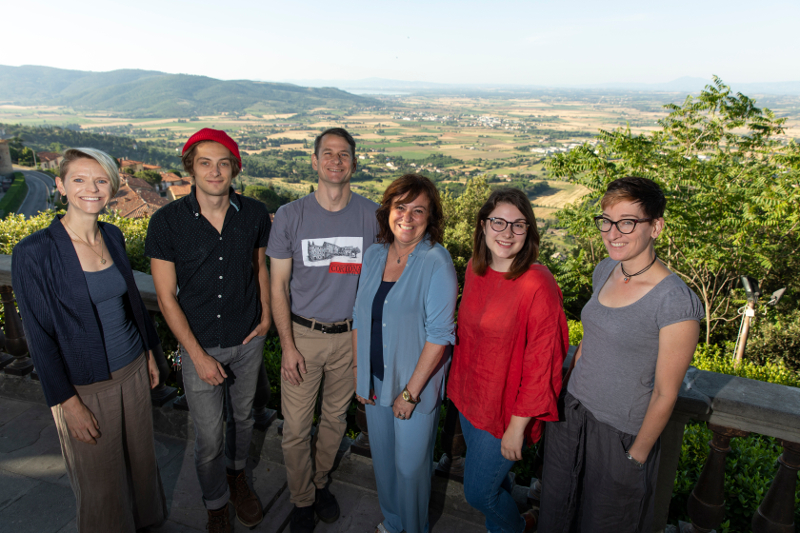
From left to right, Cortona staff members Jennifer Griffiths, Bryan Parnham, Christopher Robinson MFA ’01, Enza Valente, Zoey Wilson, and Kristine Schramer. (Photo by Andrew Davis Tucker/UGA)
An Unforgettable Experience
“The relationship between UGA and Cortona has transcended the term ‘study abroad,’” says Robinson, who became UGA Cortona’s director in 2011 following stints as a faculty member and associate director. “For UGA students and faculty, the Cortona experience is more than travel. It’s discovery.”
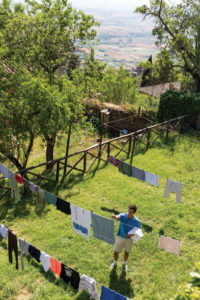
Biochemistry and molecular biology major Cole Muzio learns the art of hanging the laundry. (Photo by Andrew Davis Tucker/UGA)
Tradition is important in Cortona. Today’s students and faculty eat together four nights a week at Tonino’s, a family-owned restaurant that is one of Cortona’s largest, with one of the town’s best views, to boot. Just as they did in the 1970s.
“The University of Georgia has been here all my life,” says owner Marco Molesini, who was born four years before the campus was founded, but that’s close enough. Molesini is also a Georgia alumnus, having studied English and economics in Athens in the late 80s/early 90s. His grandfather opened the wine store in 1937 and his family also owns the town bakery and grocery store. As far as his relationship to UGA: “Where else would I go to school?”
These days when he isn’t running the store, he partners with UGA Cortona during its Maymester viticulture program.
Much of today’s Cortona experience has its roots in its founding, but there are differences. Increased tourism brought by the Frances Mayes’ best-selling book Under the Tuscan Sun: At Home in Italy and the hit movie based on it changed Cortona’s vibe.
Fewer than 1,000 live in the town all year, but during tourist season, the population can swell to 20,000. English, although sometimes with a British accent, is heard almost as often as Italian. So is Russian, German, and French. Shops line Cortona’s bustling main drag, Via Nazionale, where Italian leather goods, locally made kitchenware, men’s and women’s fashions, and foodstuffs of every delicious sort all comfortably co-exist.
Mayes, a native of Fitzgerald, still has a home in Cortona and attended some of UGA Cortona’s 50th anniversary activities in June. They included the return of some 100 Cortona alumni, former Cortona administrators, and representatives from the University of Georgia, including Jere Morehead JD ’80. A 50th Anniversary celebration in Atlanta on August 10 was even more popular, drawing about 500 attendees.
Each student, each faculty member, and each visitor experiences Cortona in their own way. Somewhere around 10,000 alumni have attended UGA Cortona. Many were UGA students, but quite a few came from other institutions, eager to experience life at one of the world’s leading art schools. Everyone who’s been to Cortona will take their memories with them everywhere they go, but they also have the realization that the Cortona experience and the people they shared it with is a distinct moment in time.
“Cortona changed my life,” says Pirkle, who came to Cortona during the spring of 2001 as a painting student from Mercer University. For one of her electives, she enrolled in a book arts class (taught by current School of Art faculty member Eileen Wallace) and loved it. After returning to the States, Pirkle completed her degree in painting, but immediately looked for book arts and papermaking programs. She found one at the University of Alabama, earned her MFA, and joined the faculty there, where she has taught since 2007.
When the opportunity came to teach at Cortona, she didn’t hesitate and returned this summer for the first time in 18 years.
“When I came back, it really felt like home,” Pirkle says. “There are experiences in life that you will never forget,” Pirkle says. “Ones that forever put you on a different path. For me,” she says, verbalizing the thoughts of the thousands of members of this study abroad family.
“That’s Cortona.”


